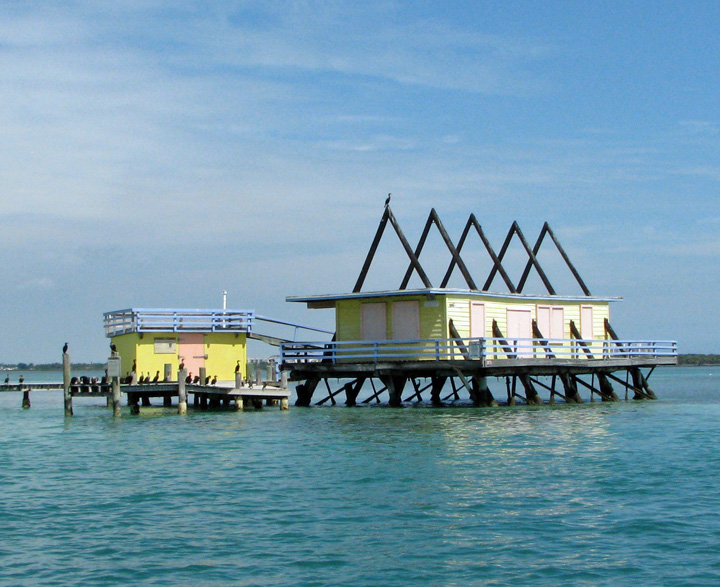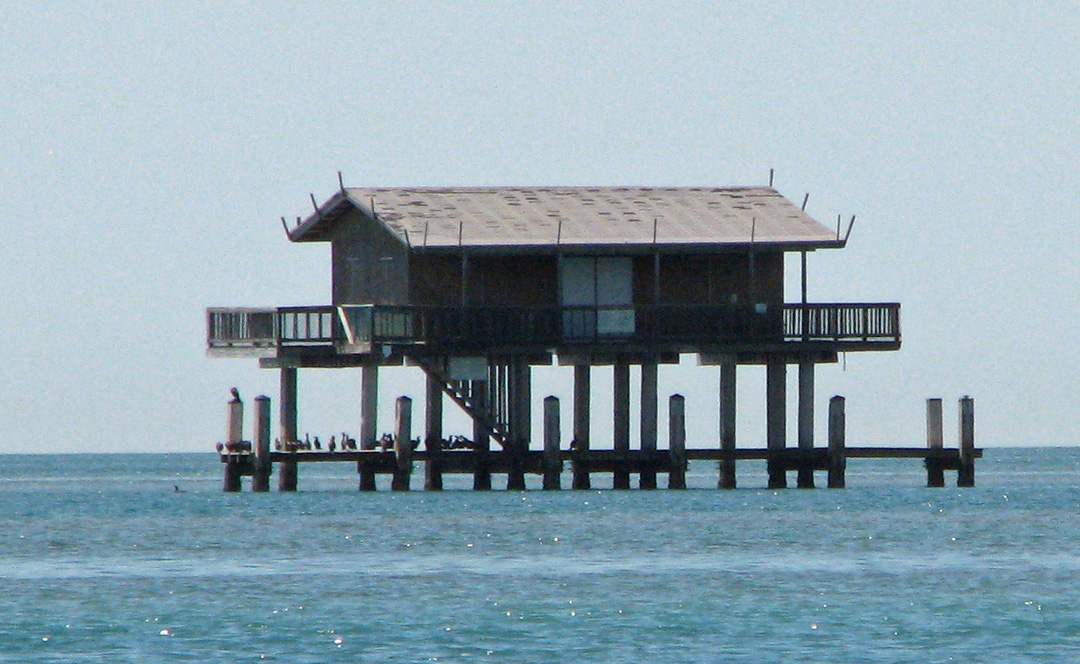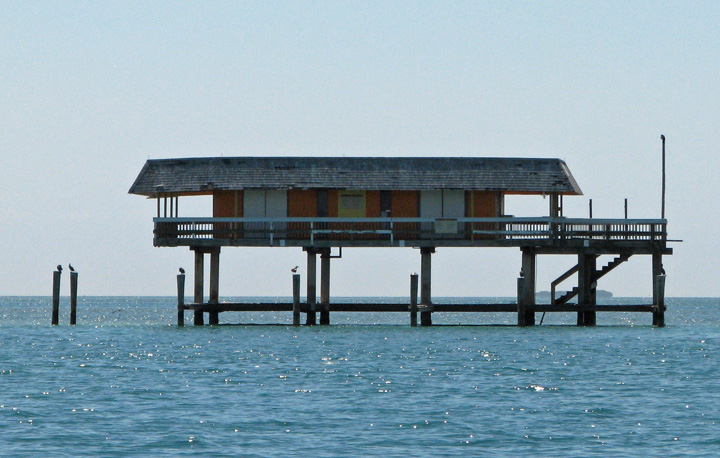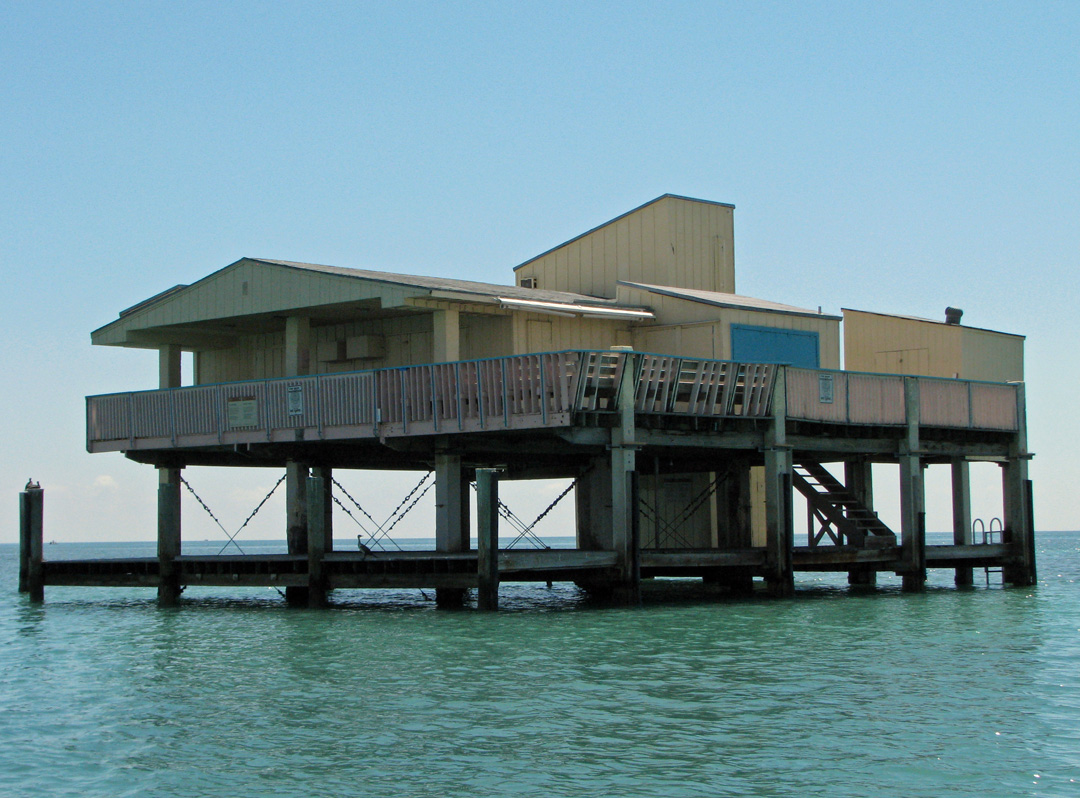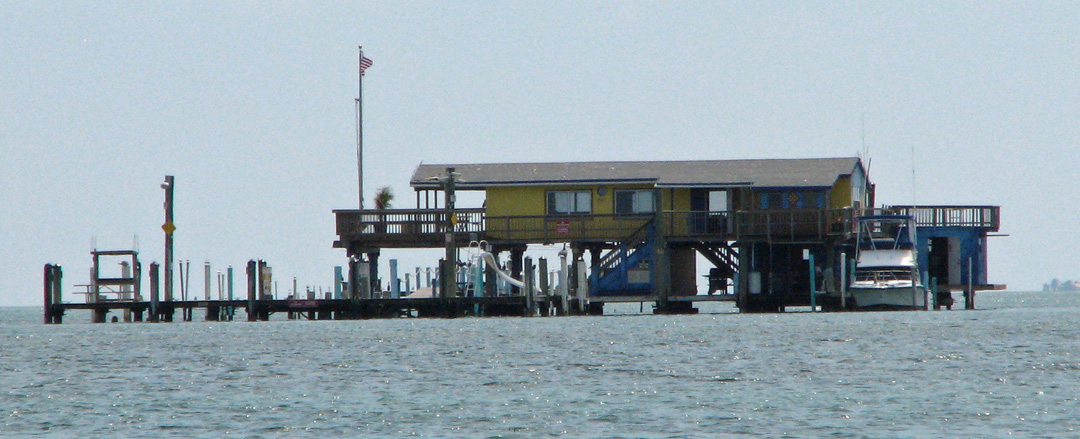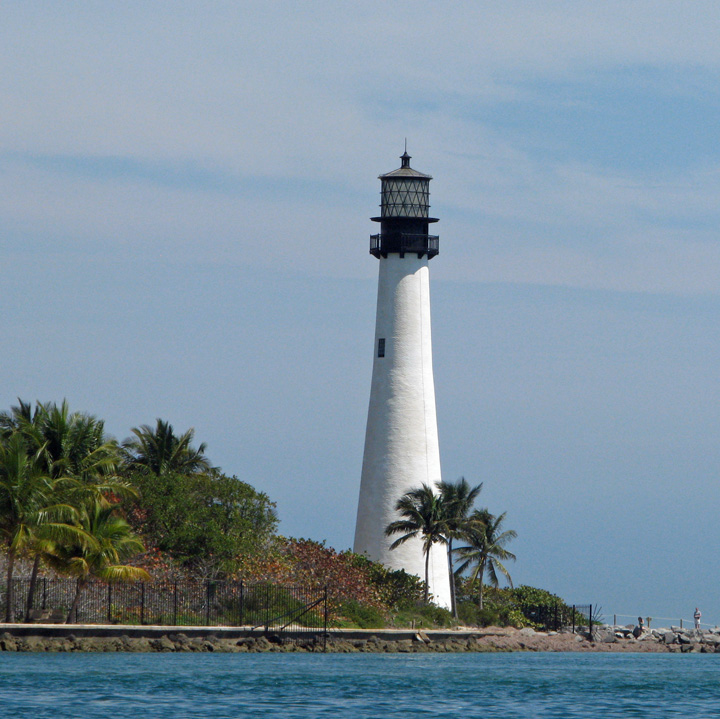Stiltsville: life beyond the bright lights of Miami
|
1955
The moon is coming up on Biscayne Bay. The waves lap against the seawall. The boat quietly slips away from its mooring and heads out past Cape Florida where the lighthouse shines its beacon toward the sea. But this boat isn’t going fishing, it’s headed for the nearby flats and the sprangled collection of houses perched on stilts in the shallow water. The channels are scarce and unmarked. It’s one of those things you either know or you don’t know: how to reach the houses lit up and spreading gold over the dark water and music into the air. Go the wrong way and you run aground until the next tide. Some are clubs, some are just houses, all are unique. Over the years almost 30 houses were built on wood or concrete stilts hovering over the bay. And with just over a mile between the nearest houses and the mainland, everybody believes the law can’t touch them. Laughter carried across the flats and small fortunes were won or lost, hearts were broken or found a way to float back to life. But, that was many years ago and this is now. 2013 The sun blazes down on the seven remaining houses perched precariously over the flats as if still waiting for those late night boats to arrive. But now their windows are shuttered and they are mostly silent except for the gulls overhead. Cormorants and anhingas line up on the adjacent pilings and the occasional ray glides like an upsidedown silver moon through the water. In all fairness, the houses were much more than the few notorious clubs that flourished in the early years. They were also family homes that were cherished and handed down. That’s their biggest legacy. And it is those former families that are largely responsible for there being any houses left on the flats now. Their connection to Old Florida and earlier times in Miami is more than the wonderful tales that remain or the family histories shaped by days in the sun. The connection is in the spirit that led to their creation and the spirit that still keeps them standing. Today the houses of Stiltsville are part of the Biscayne Bay National Park and like other communities subsumed by parks, there has been tension and fights about whether to tear them down and let the tide erase every trace they existed or to commemorate them as part of the colorful past of the area. Those tensions predate inclusion in the park and the park actually gets credit for coming up with a plan to help preserve them. For now, they are saved and exist with a public use clause through the nonprofit Stiltsville Trust. The houses are modest and it’s easy to squint and see them as they were 80 years ago. They got their start when Crawfish Eddie Walker started selling bait from an abandoned boat on the flats. He added chowder and the place got popular as a stopping off place for fishermen. In the 1930s a large sunken barge became the base for a house by Perry Nichols. His son is now an architect in Miami and he recalls those wonderful years out beyond land in a documentary for WLRN, the local Miami PBS station, (“Stiltsville: Generations on the Flats”). There was no refrigeration and his family used an old Coke cooler and ice. There was gas for cooking and simple furnishings. Back in 1938 the Calvert Club was built. The documentary calls it “elite and out of reach” and shows Miami folks done up in fancy clothes on the rustic deck. But in 1940 Commodore Ed Turner upped the ante with the Quarterdeck Club with its $150 membership fee. It was wildly popular until it burned down in 1961. During its two-decade run it was the home of many crazy days and nights and even had a little barge off to the side with cubicles for, hmmm, liaisons d’amour? Life Magazine did a story on the Quarterdeck and that brought even more crowds to party. And despite the fact that the club was well beyond what anyone considered the long arm of the law, the place got raided anyway. Throughout the ‘50s people were building houses out on the flats and by 1959 there were 27 in all. Hurricane Donna blew through in 1960, taking down 20 of them but eight were rebuilt. The ‘60s saw the advent of the Bikini Club and it was everything you imagine. Free drinks for scantily clad women, a nude sunbathing area up top and a serious sign saying “No hot pants or bikinis in the dining room.” Well, good to know there was still a dress code for dinner. But, it was raided too and closed for lack of a liquor license. Most of the houses were less like the old wild clubs and more like a family compound where generations gathered to fish and hang out while the kids snorkeled or swam nearby. The days were so perfect it seemed like they could never end. Then the state began to license quarter acre “campsites” under each house in 1965 and in 1976 set a date of July 1, 1999 as the day all the leases would expire and everyone had to leave. Any house still standing would be torn down. In 1980 the Biscayne National Park expanded its boundaries to include Stiltsville and continued to honor the leases. Then devastating Hurricane Andrew destroyed all but seven of the houses in 1992 and those are what remain. As the 1999 deadline approached the former owners, who had become leaseholders and their friends and supporters put up a good fight under the heading of SOS — Save Old Stiltsville. They tried to get the houses on the National Register of Historic Places but were turned down. However, a petition with over 75,000 signatures and some sympathetic legislators led a move to spare the wrecking ball. A deal was struck between the park service and the newly created Stiltsville Trust that allowed the structures to remain, many with the former owners as the designated caretakers. A public use clause was included but the 50% rule still holds. If a storm does serious damage, the house can’t be repaired. Every storm could be the death knell for these remaining beauties spread over the flats. But for now one can still take a boat ride out there and if you are very careful, anchor up fairly close and have lunch and imagine that it’s 50 years ago and you are just about to climb the stairs and go inside, get the beach towels out for the kids and start getting dinner ready for your friends who have already left the dock and headed your way. |
|
© Copyright 2013: text Sue Harrison; photos Sue Harrison & Lee Brock for MyOldFlorida.com.
|
|
|



